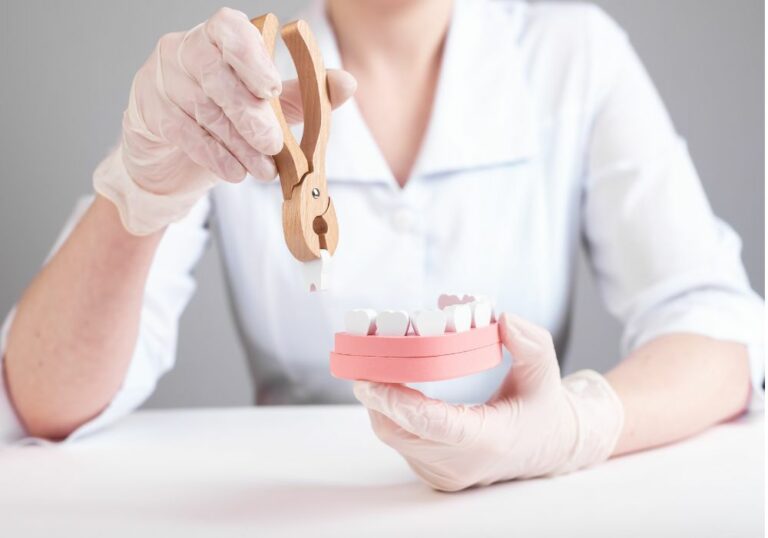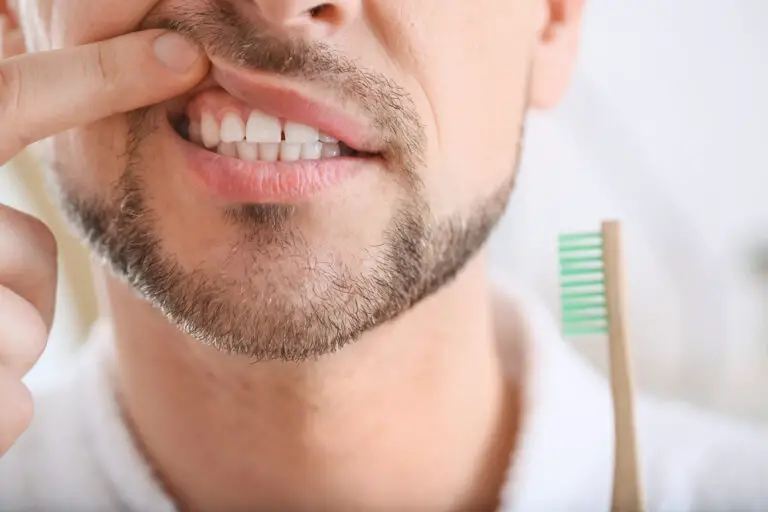Are you self-conscious about the gap between your teeth but don’t want to go through the hassle of getting braces? You’re not alone. Many people are looking for alternatives to braces to fix the gap between their teeth. Luckily, there are several options available that can help you achieve the smile you’ve always wanted.
One option is teeth bonding, which involves applying a tooth-colored resin to the surface of your teeth to close the gap. This is a quick and painless procedure that can be completed in just one visit to your dentist. Another option is veneers, which are thin shells that are custom-made to fit over your teeth. They can be used to cover gaps, as well as other cosmetic issues like discoloration and chips. Veneers are a more permanent solution than bonding, but they can be more expensive.
Understanding Dental Gaps

Dental gaps, also known as diastema, are spaces or gaps between two or more teeth. They can occur anywhere in the mouth, but are most commonly seen between the two front teeth. Dental gaps can be caused by a variety of factors, including:
- Genetics: Some people are born with a larger gap between their teeth due to genetics or inherited traits.
- Thumb-sucking: Prolonged thumb-sucking can cause a gap to form between the front teeth.
- Tongue thrusting: This is a habit where the tongue pushes against the front teeth while swallowing or speaking, which can cause gaps to form.
- Gum disease: Advanced gum disease can cause teeth to shift and create gaps.
- Missing teeth: Gaps can also form when a tooth is missing, causing the surrounding teeth to shift and create a space.
While some people may embrace their dental gaps as a unique feature, others may feel self-conscious about them. Fortunately, there are several options available to correct dental gaps without the use of braces.
Home Remedies
If you’re looking for a more natural way to fix gaps between your teeth, there are a few home remedies you can try. Keep in mind that these remedies may not work for everyone, and it’s always best to consult with a dentist before attempting any DIY treatments.
Teeth Gap Bands
Teeth gap bands are small elastic bands that you place around your teeth to gradually close the gap. You can find these bands at most drugstores or online. To use them, simply place the band around the teeth with the gap and wear it for a few hours each day. Over time, the band will put pressure on the teeth, causing them to move closer together.
It’s important to note that teeth gap bands can be uncomfortable and may cause some pain. It’s also possible for the bands to damage your teeth or gums if used incorrectly. Make sure to follow the instructions carefully and stop using the bands if you experience any discomfort.
Dental Wax
Dental wax is a soft, pliable material that you can use to fill in the gap between your teeth. To use it, simply take a small piece of wax and mold it into the shape of your teeth. Then, place the wax between the teeth with the gap and press down gently to secure it in place.
Dental wax is a temporary solution and will need to be replaced regularly. It’s also important to keep the wax clean and free of debris to prevent any dental issues from arising.
While these home remedies may provide some relief for gaps between your teeth, they are not a substitute for professional dental care. It’s always best to consult with a dentist to determine the best course of treatment for your individual needs.
Professional Dental Procedures

If you’re looking for a more long-term solution to fix the gap between your teeth, professional dental procedures may be the way to go. Here are a few options to consider:
Dental Bonding
Dental bonding is a cosmetic procedure where a tooth-colored resin material is applied to the teeth and then hardened with a special light. This material is then shaped and polished to match the surrounding teeth, effectively closing the gap. This procedure is a quick and painless way to fix small gaps between teeth and can be completed in just one visit to the dentist.
Veneers
Veneers are thin, custom-made shells that are placed over the front of the teeth to improve their appearance. They can be used to fix a variety of dental issues, including gaps between teeth. Veneers are made from porcelain or composite resin and are designed to match the color and shape of your natural teeth. This procedure typically requires two visits to the dentist and is a more permanent solution than dental bonding.
Dental Implants
If you have a missing tooth causing the gap, a dental implant may be the best solution. A dental implant is a small metal post that is surgically implanted into the jawbone, acting as a replacement for the tooth root. Once the implant has fused with the bone, a crown is placed on top, effectively closing the gap. This procedure can take several months to complete and is a more invasive option than dental bonding or veneers.
It’s important to note that these procedures can be more expensive than other options and may not be covered by insurance. It’s best to consult with your dentist to determine which option is best for you and your budget.
Preventing Further Dental Gaps

If you have recently closed a gap between your teeth, you may be wondering how to prevent it from reappearing in the future. Here are a few tips to help you keep your teeth aligned and prevent further gaps:
Regular Dental Checkups
Regular dental checkups are essential to maintaining good oral health. During your visit, your dentist will examine your teeth and gums for any signs of decay or gum disease. They may also take x-rays to check for any underlying issues that may be causing your teeth to shift.
If you have a history of dental gaps, your dentist may recommend wearing a retainer or other orthodontic appliance to help keep your teeth in place. They may also suggest other treatments, such as braces or clear aligners, to correct any underlying issues that may be contributing to your dental gaps.
Proper Oral Hygiene
Proper oral hygiene is crucial for maintaining healthy teeth and gums. Brushing your teeth twice a day and flossing once a day can help remove plaque and prevent gum disease. It is also important to avoid sugary and acidic foods, which can erode your tooth enamel and contribute to dental gaps.
If you have a habit of grinding your teeth or clenching your jaw, your dentist may recommend wearing a mouthguard to protect your teeth from further damage. They may also suggest relaxation techniques or other stress management strategies to help you reduce your stress levels and prevent teeth grinding.
By following these tips, you can help prevent further dental gaps and maintain a healthy, beautiful smile.
Frequently Asked Questions
Is it possible to close a gap between teeth without braces?
Yes, it is possible to close a gap between teeth without braces. There are several options available, including clear aligners, dental bonding, teeth gap bands, and veneers.
What are some alternatives to braces for fixing a gap in teeth?
Clear aligners are a popular alternative to braces for fixing gaps in teeth. They are almost invisible and can be removed for eating and cleaning. Dental bonding, teeth gap bands, and veneers are also options to consider.
Can dental bonding fix a gap between front teeth?
Yes, dental bonding can fix a gap between front teeth. The procedure involves applying a tooth-colored resin material to the teeth and shaping it to close the gap. Dental bonding is a quick and affordable option for fixing small gaps.
How effective are teeth gap bands for closing gaps?
Teeth gap bands can be effective for closing small gaps between teeth. The bands are placed around the teeth and apply pressure to gradually move them together. However, they should only be used under the supervision of a dentist to avoid causing damage to the teeth.
What is the most cost-effective way to close a gap in teeth?
The most cost-effective way to close a gap in teeth depends on the severity of the gap and the individual’s dental needs. Dental bonding and teeth gap bands are generally more affordable options compared to clear aligners and veneers.
Are there any natural remedies for fixing a gap between teeth?
There are no proven natural remedies for fixing a gap between teeth. However, maintaining good oral hygiene and using dental floss regularly can help prevent gaps from getting larger. It’s always best to consult with a dentist for professional advice on fixing gaps in teeth.






